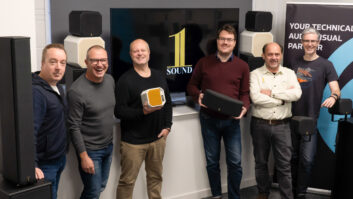 One overarching theme from InfoComm 2023 was that the industry is at or near the end of its collective supply challenges, and hopefully, that’s true. Many of us learned during the chip shortages and shutdowns that the AV industry is a small fish in a big pond when it comes to backfilling orders for certain chips, and everyone was forced to get creative. The great opportunity that comes with adversity is the need to look at things differently – through a different lens instead of what’s “tried and true.”
One overarching theme from InfoComm 2023 was that the industry is at or near the end of its collective supply challenges, and hopefully, that’s true. Many of us learned during the chip shortages and shutdowns that the AV industry is a small fish in a big pond when it comes to backfilling orders for certain chips, and everyone was forced to get creative. The great opportunity that comes with adversity is the need to look at things differently – through a different lens instead of what’s “tried and true.”
As the recent supply chain crisis showed us, any significant stoppage has a ripple effect downstream, and the customers with the greatest buying power usually take precedence in filling back orders. However, the “squeaky wheel” approach was also effective in some cases, allowing AV companies to move up the priority list. That was largely due to the advocacy of third parties operating on the AV industry’s behalf. The collective buying power of all members is a much more compelling scenario for chip manufacturers to consider compared to individual company’s needs.
Many manufacturers redesigned products during the supply chain shortage to fulfil customer orders by utilising more readily available components. However, the most savvy subcomponent vendors redesigned their offerings as pin-compatible drop-in replacements. Pin-compatible chips and modules share a common footprint with the device they’re replacing, with the same functions assigned or usable on the same pins. This compatibility allows downstream customers to literally “drop in” the new chip or module into their designs without redesigning circuit boards. Pin compatibility is key to reducing the time-to-market when substituting components.
SOFTWARE-BASED
Many AV manufacturers are pivoting towards software-based processing and the cloud for new product offerings. The advantages are significant, not the least of which is circumventing supply chain challenges. Embedded software platforms running on commodity x86 and Arm processors gives OEMs more flexibility in their product designs, including easy in-field software upgrades and reduced manufacturing costs. Application libraries and SDKs are companion offerings to embedded platforms, allowing software developers to integrate advanced processing capabilities directly into their UIs to deliver the best possible customer experience.
The pandemic and subsequent supply chain challenges were unprecedented upheavals to the AV industry and beyond. Auto and retail manufacturers wielded their significant buying power to move to the head of the fulfilment line during the chip shortages, and AV was relegated to the back of the pack. However, through innovative tactics like trade group advocacy, drop-in replacement parts and software virtualisation, the AV industry was able to whether the supply chain saga relatively intact. Looking to the future, the hard-earned lessons learned will help us all plan more robustly for subsequent supply challenges, should they arise.







